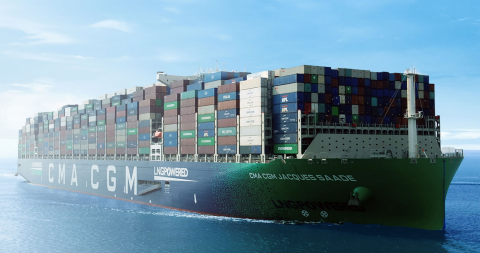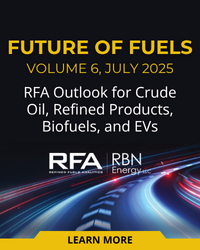After successfully reducing emissions of pollutants like sulfur and nitrogen, the global shipping industry now is focused on ratcheting down — and eventually eliminating — its emissions of carbon dioxide (CO2) and other greenhouse gases (GHGs). It’s no easy task. Crude-oil-based bunker like low-sulfur fuel oil (LSFO) and marine gas oil (MGO) are readily available, relatively inexpensive, and pack a lot of energy into each gallon. But GHG-reduction goals are in place, both globally and in the European Union (EU), and shipping companies are taking steps to meet them, initially with more LNG-fueled vessels and later with ships powered by clean methanol, clean ammonia and biofuels. In today’s RBN blog, we discuss the shift in bunker fuel consumption since IMO 2020 was implemented five years ago and the efforts to transition to even cleaner shipping fuels through the late 2020s and beyond.
Global shipping — the 50,000-plus tankers, dry bulkers, container ships, cruise ships, and other commercial vessels plying international waters — accounts for up to 3% of the total energy consumed on the planet every day and a roughly similar share of GHG emissions. Ships operating on the high seas are subject to rules developed and implemented by the International Maritime Organization (IMO), including IMO 2020, which kicked in on January 1 of that year. As we explained in All Around the World, IMO 2020 slashed the allowable sulfur content in bunker fuel to 0.5% from the old 3.5% — quite a change, considering that shippers for many years had relied on low-cost high-sulfur fuel oil (HSFO) to meet their needs.
There had been some concern at the time that refineries would have trouble keeping pace with the rising demand for IMO-2020-compliant fuels like LSFO and MGO, but those worries were mitigated by, among other things, the efforts by many shippers to install on-board “scrubbers” that removed most of the sulfur from ships’ emissions and enabled the vessels to continue using HSFO. Also, COVID hit within a few weeks of IMO 2020’s implementation, sharply reducing demand for global shipping and bunker fuels for several months, thereby giving shipping companies and refiners more time to adjust to the new regulatory regime. Today, the market for distillates used in shipping is pretty well balanced.
The Focus on GHGs
As we said in the introduction to today’s blog, the IMO also has had GHGs on its radar. In 2018, the organization’s members approved an “initial strategy” that called for the shipping industry to begin reducing its overall GHG emissions as soon as possible and achieve a 50% reduction (from 2008 levels) by 2050. Given that shipping activity is expected to increase over that period, the strategy also called for a 40% reduction in shipping’s carbon intensity by 2030 and a 70% reduction by 2050.
An LNG-fueled Container Ship. Source: CMA CGM
Join Backstage Pass to Read Full Article








